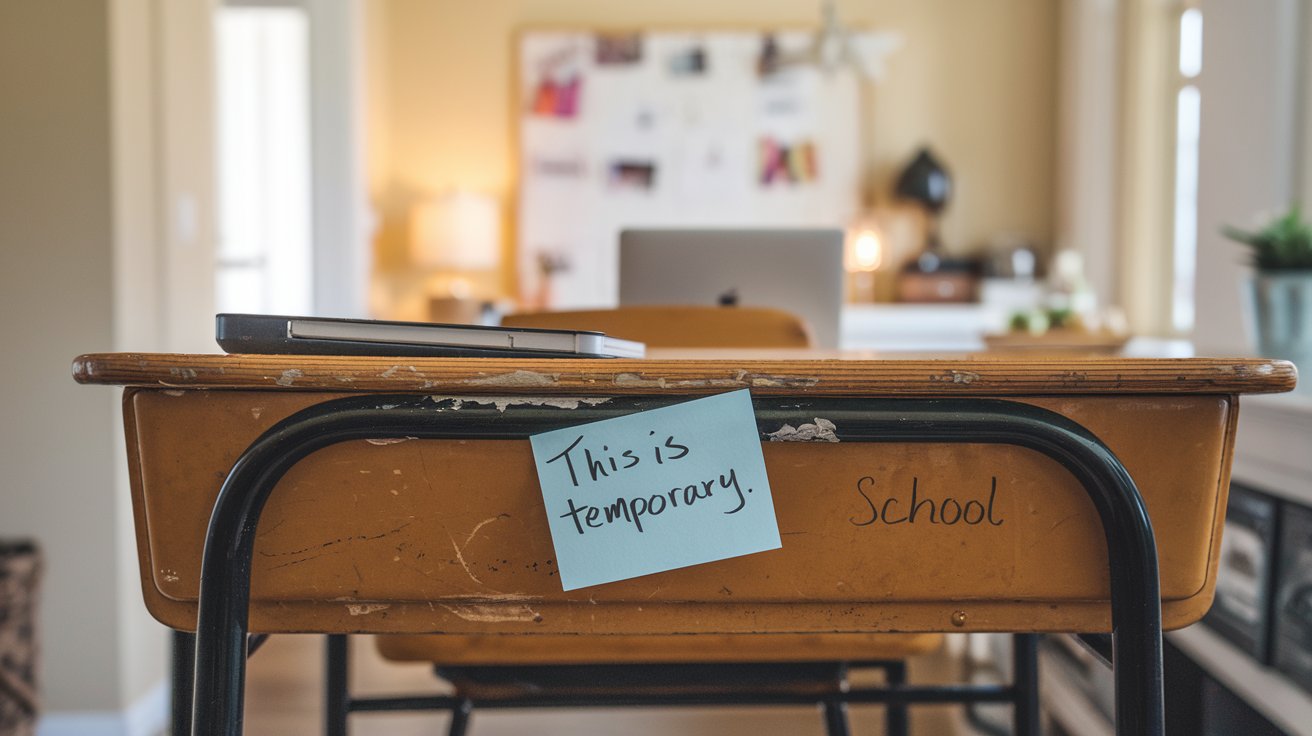Your cart is currently empty!

Slow Living Tips for Teachers to Practice Every Day
Here are 10 practical slow living tips for teachers to create calm and balance in their busy lives. From mindful mornings to unplugging in the evenings, these actionable ideas help teachers prioritize self-care, embrace simplicity, and find joy in everyday moments without adding to their workload.
This post may contain affiliate links. At no cost to you, I may earn a small commission if you click on any affiliate link within my blog. Some of the content on this website was created with the help of AI.
Teaching is demanding, but even on the busiest days, there are ways to embrace a slower, more intentional lifestyle. These slow living tips for teachers will help you create moments of calm and joy throughout your day – without adding to your to-do list.
1. Start Your Day with a Gentle Routine
How you begin your morning sets the tone for the day. Instead of rushing, take five minutes to savor a cup of tea or coffee without distractions. If you can, spend a few moments journaling, stretching, or practicing deep breathing to ground yourself. These small changes are powerful slow living tips for teachers looking to start the day on the right foot.
Begin your morning with simple routines that set a calm tone:
- Brew and savor your favorite drink: Spend a few minutes enjoying tea or coffee without rushing.
- Stretch or do light yoga: Just 5 minutes of stretching helps me feel grounded and energized.
- Write in a journal: Note three things you’re looking forward to today to start with a positive mindset. Start your day positively with a guided gratitude journal designed for quick reflections.
These easy steps are quick to implement and ensure a peaceful start, even on busy mornings.

2. Turn Your Commute into a Mindful Moment
Your commute can be more than just getting from point A to point B. Listen to calming music or an uplifting podcast, helps me to mentally prepare for the day ahead. On the way home, I enjoy silence and use this time to let go of work stress and ease into my personal time. This simple practice is one of the easiest slow living tips for teachers to adopt.
Turn your commute into a moment of mindfulness:
- Listen to something calming: Choose relaxing music or a podcast that inspires and uplifts you.
- Practice gratitude: Think of three things you’re thankful for as you drive.
- Breathe deeply: Take slow breaths while waiting at traffic lights.
These small adjustments make your journey feel more intentional and less stressful.

3. Make Lunchtime a Break for You
I find it very tempting to work through lunch, but stepping away from my desk, even for 10 minutes, can make a big difference. Most of the time I just go outside for some fresh air. Finding a quiet spot to eat would also be a great idea if the weather is nice. This 10 minutes or so is a great way to nourish yourself without distractions like emails or social media and is a perfect example of the many slow living tips for teachers that fit into busy days.
Transform your lunch break into a small act of self-care:
- Step outside: Even 5 minutes of fresh air can boost your mood.
- Eat mindfully: Savor your food without multitasking or looking at your phone.
- Bring a favorite treat: Packing something you love can make lunchtime more enjoyable and it gives you something to look forward to.
These simple, actionable ideas ensure you recharge in the middle of your day instead of feeling drained.
4. Tidy Your Desk at the End of the Day
A clutter-free desk can help you feel more organized and in control. I like to spend five minutes at the end of my workday tidying up, I stack papers, put away supplies, and clear the space. Walking out of my office with a clean desk is a small win that aligns perfectly with teachers who want to simplify their environment.
A clutter-free desk can help you feel more organized and in control:
- Stack papers and put away supplies: Five minutes is all it takes to tidy up. Use minimalist desk organizers for a quick clean-up.
- Wipe down your desk: A clean surface helps create a fresh start for tomorrow.
- Keep a small storage bin handy: Quickly collect random items to sort later.
This simple habit makes leaving work and coming back the next day, much less stressful.

5. Bring Small Joys to the Classroom
Surround yourself with little things that make you happy. A small plant, a photo of a loved one, or a favorite mug can bring comfort and warmth to your space. These touches are easy-to-follow slow living tips for teachers to create a calming classroom environment.
Adding a few personal touches can make your workspace feel like a sanctuary:
- Decorate with a plant or flowers: A touch of greenery can brighten your day. A desk-friendly succulent plant is a perfect low-maintenance option.
- Use a favorite mug or water bottle: Small, familiar items make everyday tasks more enjoyable.
- Display positive reminders: Quotes, photos, or artwork can inspire you when the day gets tough.
These little joys bring warmth and comfort, even during busy teaching days.

6. Practice Gratitude in Tiny Doses
Gratitude doesn’t have to be a grand gesture. Take a moment to jot down one thing you’re thankful for, maybe a student’s smile or a supportive colleague. Sharing a kind word or a small success with others can also boost your mood. As one of the simplest slow living tips for teachers, this practice is a great way to shift your mindset.
Gratitude can transform your perspective in just a few moments:
- Write one thing you’re thankful for: This can be as simple as surviving a tough lesson! Add color and creativity to your notes with vibrant pens.
- Share appreciation: Tell a colleague or student something you admire about them.
- Reflect before bed: Think about one good thing that happened during the day.
These tiny moments of gratitude foster positivity and resilience, even in challenging times.

7. Create a Relaxing End-of-Day Ritual
When I get home, to let my body and mind know it’s time to switch off, I change into comfortable clothes. Sometimes, later in the evening, I light a candle, and play relaxation music. These small rituals signal the end of your workday and reflect the essence of transitioning from work to home.
A relaxing evening routine helps you transition from work to personal time:
- Change into comfortable clothes: Let this be a signal that work is done.
- Light a candle or use essential oils: Scents like lavender or eucalyptus can promote relaxation.
- Engage in a calming activity: Read, listen to soft music, or do a craft to wind down.
These rituals help you mentally and physically switch off from school-related stress.

8. Say No to Extra Work
It’s okay to set boundaries and protect your energy. Say no to tasks that don’t align with your priorities or capacity. This is one of the most empowering slow living tips for teachers, because your well-being matters.
Protecting your time and energy is essential for slow living:
- Evaluate requests carefully: Ask yourself if the task aligns with your priorities.
- Use polite phrases to decline: “I can’t commit to that right now, but thank you for asking.”
- Set clear boundaries: Avoid taking work home and stick to your contracted hours. Learn practical strategies from books like Set Boundaries, Find Peace.
By saying no, you create space for rest and the things that truly matter to you.
9. Incorporate Nature into Your Routine
Spending time in nature can be rejuvenating, even if its just a few minutes. Open a window in your classroom to feel a breeze or hear the birds. After school, take a short walk to clear your head and enjoy the beauty around you. This can be an easy way to find balance in your day.
Nature can have a calming, restorative effect even in small doses:
- Take a short walk outside: A 10-minute stroll can reset your mood after a busy day.
- Open your windows: Let fresh air and natural sounds into your classroom, office or home.
- Notice small details: Observe the colours of leaves, the sound of birds, or the feeling of sunshine on your skin.
These moments of connection with nature can be grounding and refreshing.
10. Unplug in the Evenings
Give yourself permission to step away from screens after work. Turn off your devices at least an hour before bed and spend the time reading, journaling, or enjoying a hobby. This is one of the most effective ways teachers can promote better sleep and mental clarity.
Stepping away from screens helps you fully recharge:
- Set a time to turn off devices: One hour before bed is ideal for unwinding. Use an analog alarm clock to replace your phone alarm.
- Choose screen-free activities: Read a book, meditate, or journal to relax your mind.
- Keep your phone out of reach: Place it in another room to resist the urge to check it.
This simple habit promotes better sleep and allows you to focus on what truly matters in your evenings.
By embracing these slow living tips for teachers, you can weave moments of intention and calm into your daily routine without adding stress. Remember, it’s not about doing everything perfectly, it’s about finding little ways to prioritize your well-being and reclaim your time.
How do you practice slow living as a teacher? Share your favorite tips in the comments below!




